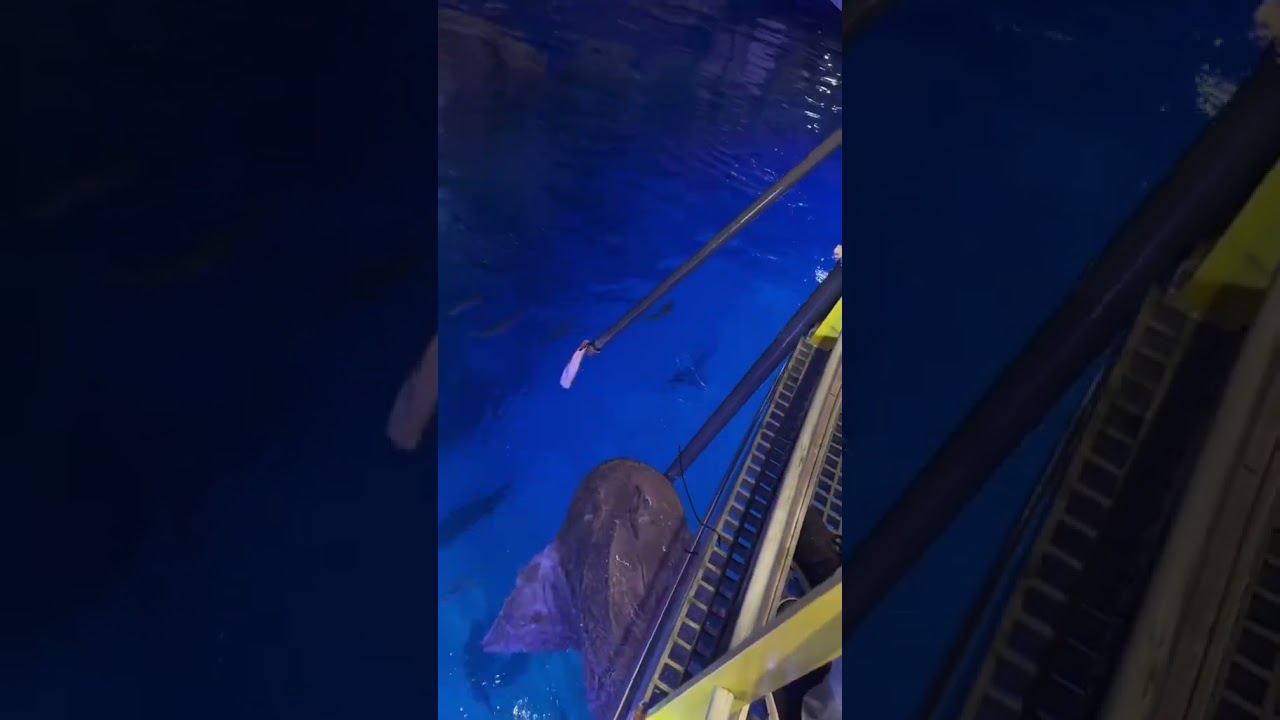- The biological and ecological significance of the Rhina ancylostoma, also known as the bowmouth guitarfish, and its pivotal role in marine ecosystems.
- The intricacies of zoo management in conserving marine species, with a focus on the challenges and successes in maintaining a sustainable habitat for species like the bowmouth guitarfish.
- The importance of wildlife conservation efforts to protect marine species under threat due to human activities, climate change, and habitat loss.
- The impact of educational initiatives and multimedia content in raising awareness about lesser-known marine species and how they inspire conservation actions.
- Innovative feeding strategies in captivity that mimic natural diets to enhance the well-being of the bowmouth guitarfish and encourage public interest in marine conservation.
The bowmouth guitarfish, Rhina ancylostoma, holds a special place in marine biology due to its unique evolutionary features and critical role in oceanic ecosystems. This species is often celebrated for its fascinating blend of shark-like and ray-like characteristics, a testament to the diversity and adaptability of aquatic life forms. Broadly distributed across the Indo-Pacific region, the bowmouth guitarfish inhabits coastal waters, playing a vital role in the trophic cascade. Due to their feeding habits, including consuming crustaceans and small mollusks, bowmouth guitarfish help maintain the delicate balance of their marine environment. This article will delve into the biological and ecological significance of this enigmatic species, revealing its place within the marine tapestry and measures necessary for its conservation.
In the diverse arena of zoo management, maintaining and conserving marine species such as the bowmouth guitarfish require sophisticated strategies. Zoos and aquariums have evolved to become centers of conservation rather than mere displays of exotic wildlife. The challenges of replicating marine habitats in captivity necessitate an approach grounded in scientific research and ecological fidelity. Aquatic enclosures must mimic the conditions of the wild, involving precise temperature control, salinity levels, and environmental complexity to replicate the natural habitat of the guitarfish. This requires a robust understanding of the ecological requirements and behaviors of the species. Furthermore, staff must be adept in maintaining water quality and engaging in veterinary care tailored to specific species needs.
At the heart of these conservation efforts lies the pressing need to protect marine species like the bowmouth guitarfish from anthropogenic threats. Human activities such as overfishing, pollution, and coastal development have led to habitat degradation, significantly endangering many marine species. Additionally, climate change presents a broad challenge, altering water temperatures and ocean chemistry. These factors necessitate concerted conservation efforts aimed at both in-situ and ex-situ management strategies. On-site conservation efforts involve protecting natural habitats and enforcing sustainable fishing practices. Ex-situ strategies, like those utilized in aquariums and zoos, provide refuges for species and serve as genetic reservoirs for future reintroductions into the wild.
Promoting awareness and education around lesser-known marine species is crucial in cultivating conservation enthusiasm. The emergence of digital platforms and multimedia content allows for innovative approaches in engaging the public. Educational videos, interactive exhibits, and social media campaigns offer captivating insights into the lives of creatures like the bowmouth guitarfish. These initiatives have the power to ignite curiosity and empathy in audiences, fostering a culture of conservation. Moreover, by highlighting the unique adaptations and critical roles of such species in ecosystems, these educational efforts help people appreciate the intricate webs of life that exist beneath the ocean’s surface.
Feeding strategies in captivity are vital to mimicking the natural diets of species like the bowmouth guitarfish, ensuring their health and longevity. The diet of Rhina ancylostoma in the wild is diverse, comprised primarily of crustaceans and mollusks. Captive feeding programs must similarly emphasize variety and nutritional balance, carefully curated to stimulate natural foraging behaviors that are crucial for the animal’s mental and physical health. Providing a varied diet also serves an educational purpose, demonstrating to visitors the importance of ecological harmony and the role of each species in its environment. Combined with engaging talks and interactive sessions, these strategies not only support the well-being of captive animals but also enhance public understanding and interest in marine life and its preservation.
In summary, the conservation of the bowmouth guitarfish encapsulates the broader challenges and triumphs of modern wildlife conservation and zoological management. With a commitment to preserving the complexities and beauty of marine life, we draw closer to a future where the richness of our oceans can be sustained for generations to come.
*****
Source Description
#Oceanogràfic #OceanogràficValencia #Valencia #Rhina #Shark #Tiburón #Aquarium


